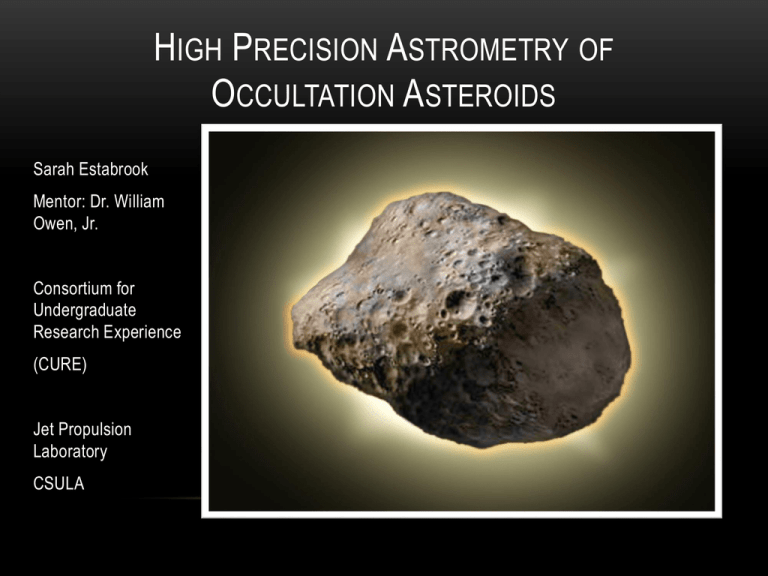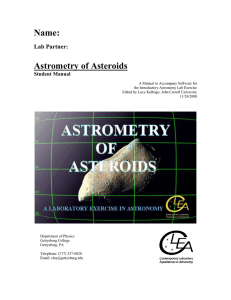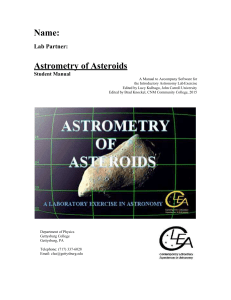H P A O
advertisement

HIGH PRECISION ASTROMETRY OF OCCULTATION ASTEROIDS Sarah Estabrook Mentor: Dr. William Owen, Jr. Consortium for Undergraduate Research Experience (CURE) Jet Propulsion Laboratory CSULA Table Mountain Observatory 0.6 m Ritchey–Chrétien telescope Typical prediction of a star’s location • Beta angle must be greater than 90º • Declination must be greater than -30º • Significant number of background stars Data Collection • Right ascension and declination coordinates are entered • Picture taken • Coordinates and temperature, pressure and humidity are recorded • Typically two to five shots taken for each target All the images from the night are then reduced into precise coordinates of each target. • Update orbital information • Determine asteroid’s mass • Optical Navigation for use in certain spacecraft Antiope—Double Asteroid http://www.asteroidoccultation.com Optical Navigation in Spacecraft Our data and data like ours is used to assist in the navigation of many longdistance spacecraft Differenced Doppler: Another method of navigation Saturn’s rings and Enceladus—one of many satellites





